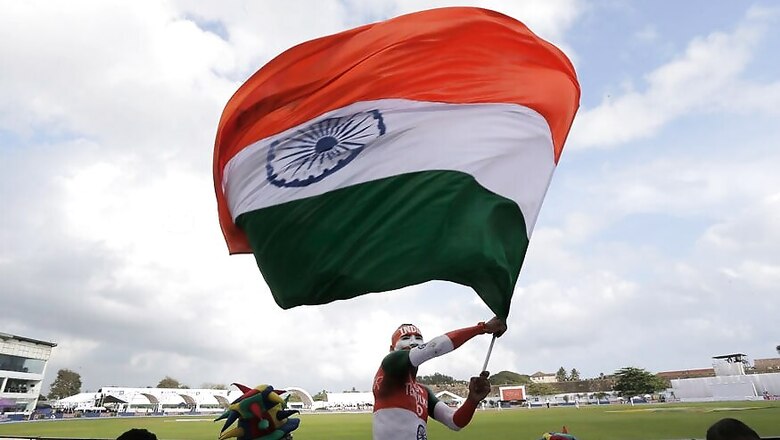
views
New Delhi: Savarkar and Hedgewar envisioned India to be a place where minorities were required to adjust themselves to a “symbolically Hindu” country, but the theory of “upper caste nationalism” was not only undone by the depressed class, they also rejected to settle in the “contesting ideas of nation”.
Even as Dalits are rallying on streets today to fight atrocities, they will never let the provisions of the Constitution fail, which granted them the rights.
“It wasn’t so then, and it isn’t so now,” writes Vikas Pathak in his latest book, ‘Contesting Nationalisms – Hinduism, Secularism and Untouchability in Colonial Punjab 1880-1930’.
In times of ‘hyper-nationalism’ or the ‘enforced one’, Pathak’s recent offering can be a comforting guide to those who find themselves at the end of comprehending their ties with the nation.
If standing at the time of national anthem, just few minutes before the film screening is nationalism or any less, if they don’t? If nationalism is to stand in the line to withdraw money from the ATMs as a mark of respect for the government that premises the move of demonetization to crack on black money? Or is it anti-national to question the move that comes ahead of Uttar Pradesh’s elections in 2017?
In the past few months there have been attempts by authors like Sugata Bose to compare the ‘nationalism of fear and force’ with the ‘gentler one that is less expecting and more generous’. The recent occurrences in the country brought people to making comparisons between Rabindranath Tagore’s idea of nationalism to that of Hindutva leaders like VD Savarkar and MS Golwakar.
In his latest book, the author gives a glimpse of various sub-categories of nationalism that has emerged over the years. This, in-turn, gives people the freedom to choose the 'type of nationalism' they can relate to and would vouch for. The book delves into the historical legacy of struggle for identity and India's gradual fledging as a nation.
In fact, the purpose of writing the book has been to comprehend the interaction of various ideological currents that operated within the pan-Indian space in colonial times, and consequently created their own visions of nationalism. The book delves deeper into finding out how those ideological currents helped various sections in the country in finding their politics and taking it forward in succeeding years post-independence.
The four visions put forward by Pathak unravel the complexity of nationalism. Pathak starts with “Composite Nationalism”, and to believe in this form of nationalism entails there “was no contradiction between emerging community interests and the vision of the composite nation.”
The proponents felt that two kinds of interests could be harmonized, balanced and properly represented through participation in the Congress-led movement on the one hand, and with negotiations between representatives of communities on the other.
The phenomenon is marked by mutual contests on the question of how a truly composite nation was to be constructed. Here the references have been made to what should be the means to a composite nation. It mentions Mahatma Gandhi’s approach of conciliation with regards to minorities, Muslims, and Madan Mohan Malviya’s, Lala Lajpat Rai’s discourse of ‘community rights’ as a means to a composite nation.
The nation also offers space to ‘Secular, Citizenship-based Nationalism’ which rejects communitarian symbolism and distances itself from the communitarian politics – finding it to be a negative force vis-a-vis nationalism, as it is based on modern values and Enlightenment. The staunch votaries and proponents of this kind of nationalism are Jawaharlal Nehru and Bhagat Singh.
Pathak puts another idea of nationalism, which is an anti-thesis of the earlier two understandings of the nation – it is called Religious Nationalism. The people who adopted this vision of the nation “imagined a nation with the cultural stamp of their religious community.”
The author argues: “They were religious nationalists for whom the nation became identical with the community not by way of being peopled exclusively by members of that community, but in the sense that the cultural core of the nation would be reflective of the community as imagined in national ways.” Here, the minorities were required to adjust themselves to an India that was symbolically Hindu. It was envisioned by Bhai Parmanand, VD Savarkar, KB Hedgewar and MS Golwalkar.
The book covers Nation as envisioned by Depressed Classes – we see that section today rallying on streets to save the provisions granted to them by the Constitution in fighting against the atrocities.
At the time of independence this vision was formed by rejecting the nationalism of upper caste dominated Congress, and it was born after seeing the deficiencies of the earlier forms of nationalisms. The secular, religious variants of nationalism assumed the depressed classes to be settled during the contesting ideas of nation. But it wasn’t so then and it isn’t so now.
(The author Vikas Pathak is currently Deputy Political Editor, The Hindu, New Delhi)
















Comments
0 comment